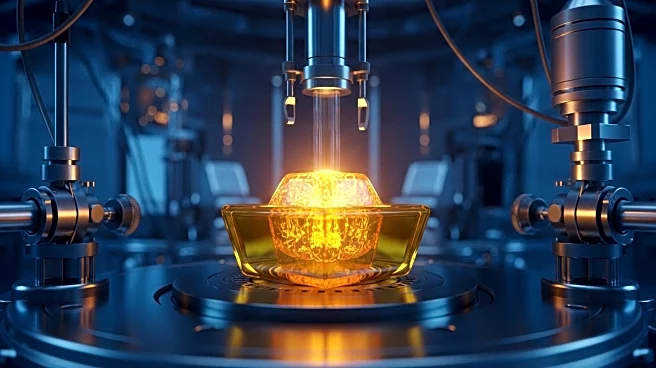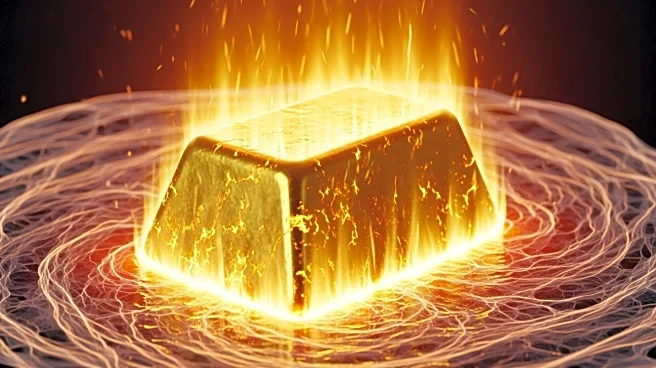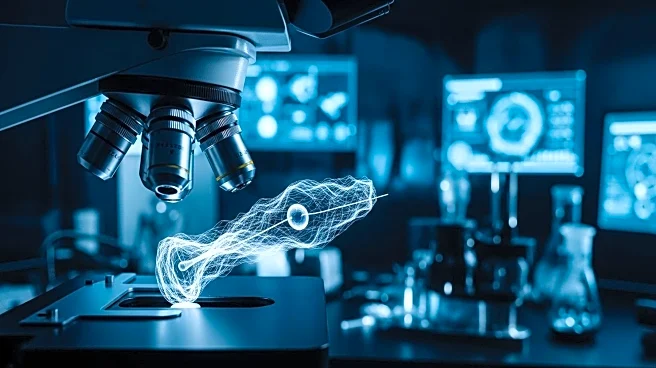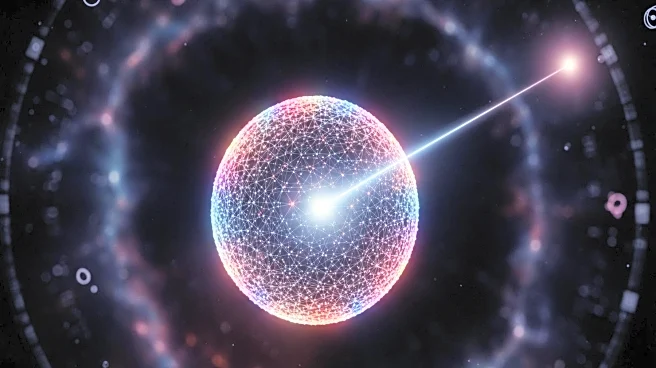What's Happening?
An international team of physicists has successfully superheated gold to a temperature of 19,000 Kelvin, equivalent to 33,740°F, without causing it to melt. This groundbreaking experiment was conducted using ultra-fast laser heating and precise X-ray probes to measure the temperature in real-time. The study, led by Thomas G. White from the University of Nevada, Reno, in collaboration with SLAC National Accelerator Laboratory and other institutions, challenges the long-held belief that solids cannot be heated beyond a certain point without melting. The researchers managed to keep the gold crystalline for a brief moment, allowing them to record atomic movements and lattice temperatures. This achievement is significant in the study of warm dense matter, a state relevant to planetary interiors and fusion targets, where accurate temperature measurements have been difficult to obtain.
Why It's Important?
The ability to superheat gold without melting it has profound implications for various scientific fields. In planetary science, accurate temperature measurements of warm dense matter can improve models of heat movement through planetary cores and mantles. In fusion research, understanding the transition from solid to ultra-hot states can enhance inertial confinement experiments, which rely on precise design choices. Additionally, this discovery could lead to a reevaluation of material properties such as strength and heat capacity in extreme environments. By demonstrating that rapid heating can maintain crystalline order, the study provides a new tool for testing assumptions about melting and stability, potentially leading to advancements in technology and materials science.
What's Next?
Future research will likely explore different elements, thicker targets, and varied time delays to map the limits of superheating without melting. These experiments will test the general applicability of the findings and refine the understanding of the practical limits of heating solids. The insights gained could lead to new applications in materials science and technology, as researchers continue to push the boundaries of what is possible with ultra-fast heating techniques.
Beyond the Headlines
The study challenges the entropy catastrophe theory proposed in 1988, which suggested a limit to how much a solid can be heated before melting. By using ultra-fast heating, the researchers have shown that this limit can be surpassed without violating the laws of thermodynamics. This opens up new possibilities for exploring the behavior of materials under extreme conditions, potentially leading to innovations in various scientific and industrial fields.












